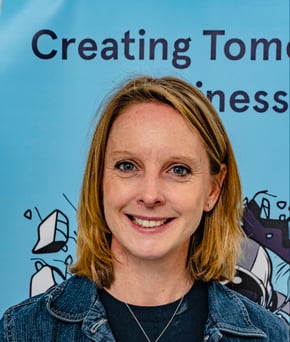Being Product-Led means your organisation has a relentless focus on delivering genuine customer value through the products you create. It means having a clear view of the change you want your products to bring about in the world and a path to get there. It means leveraging the power of your teams by giving them problems to solve and holding them accountable for the outcome.
As you embark on a product-led transformation start with getting the foundations right. From our experience, the best product companies have these 5 pillars in place:
- Product Vision
- Product Strategy
- Organise around Value
- Shared Success Measures
- Outcome based Roadmaps
Our recent survey showed that many organisations have gaps when it comes to these foundational pillars.
Product Vision
43% of respondents have a product vision that articulates the problems their product is trying to solve and the change they want to make in the world. However, only a quarter of those organisations have a product strategy that maps the course to achieving that vision.
A further 32% do have a high level vision, but what the teams are working on rarely aligns with achieving it.
If your organisation doesn’t have a clear vision, it will be very difficult to align the business around where you are going. Different departments will head off in different directions based on their own ideas, with resource not concentrated on the most critical priorities.
"An inspiring and compelling product vision serves so many critical purposes that it is hard to think of a more important or higher-leverage product artifact" Marty Cagan
When creating your vision, here are some questions to answer:
- What problem are you looking to solve?
- Who is your customer?
- What change do you want to bring about?
Product Strategy
Only 17% of those surveyed said they had a product strategy that provides teams with clarity on “how” they will reach their vision.
38% are focused on churning out features, all for a reason but with no clear strategy.
Without a well-defined strategy, it’s difficult to make informed choices and prioritise initiatives that align with the vision (assuming you have one). The default ends up being decisions based on the loudest voice (customer or stakeholder) or an overly metricated / scored feature backlog. An understanding of the problem to solve gets lost and there is little room for innovation and creativity.
Questions to answer:
- What are your business goals?
- What challenges are standing in the way of reaching your product vision?
- What problems can you address to tackle the challenges?
- What are the options?
- What data and insight do you have to inform the choices?
How Teams are Organised
There was a fairly even split across how teams are organised.
26% given problems to solve and organised around customer value
22% cross functional teams organised around product features
26% organised by function
26% reorganised based on current priorities
If the whole team have a deep understanding of customer needs and pain points there is a higher chance you’ll come up with innovative solutions to solve problems and deliver value.
An easy first step for a team to take is to map out the customer journey and consider:
- What is the problem your are solving?
- What are the pain points and opportunities for your customers?
- What are your hypotheses and what experiments can you run to test them?
Measuring Success
The vast majority (close to 90%) track outcomes as the measure of success for their product. 41% do this based on financial KPIs and 45% define and measure success based on targeted metrics (financial and non-financial) for an initiative or feature.
Only 11% measure success based on delivery output, story points and whether features were shipped to meet deadlines.
When deciding what to measure, consider:
- What is happening in your product when you picture your successful customer?
- What are the metrics that tells you your strategy is on track?
"An imperfect measurement for the right idea is better than a perfect measurement for the wrong idea” John Cutler
Outcome Based Roadmaps
22% of respondents indicated that they have a theme driven roadmap that focuses on outcomes. Wherever possible we advocate for roadmaps categorised in this way, defining the benefits and outcomes over time horizons such as now, next, later.
You should be able to articulate the goals or outcomes of your strategy and know what you are working on now that focuses on those goals.
There will be times when you need to hit a date – call this out. It should be the exception for compliance or other time sensitive drivers rather than the norm.
36% have quarterly roadmaps that communicate delivery milestones based on objectives. 30% maintain project plans and 12% have roadmaps based on commitments to customers with set dates.
Ultimately, a product roadmap is a communication tool, helping to align the organisation. It should be iterative, evolving until the desired outcomes are achieved.
“Think outcomes, not output. Your roadmap should be tracked to company-level objectives, not a pile of features for features' sake.” Janna Bastow
As you build your roadmap, can you answer?
- What are the outcomes of your strategy that you are working toward?
- What are you discovering and deliviering now with those goals in mind?
- What questions do you need to answer next?
- What high level "how might me" questions will you consider later?
By focusing on delivering value and exceptional user experiences, product-led companies achieve sustainable growth and a customer-centric culture which result in a more resilient and successful business in the long run.
Where do you stand? Take our assessment here to find out.

.png?width=300&name=astro%20(3).png)